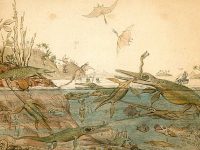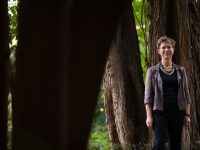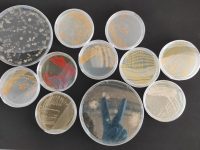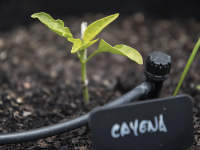Interview with Simonetta Gribaldo
«The next few years are going to be the golden age of microbiology»
Evolutionary microbiologist working at the Pasteur Institute in Paris
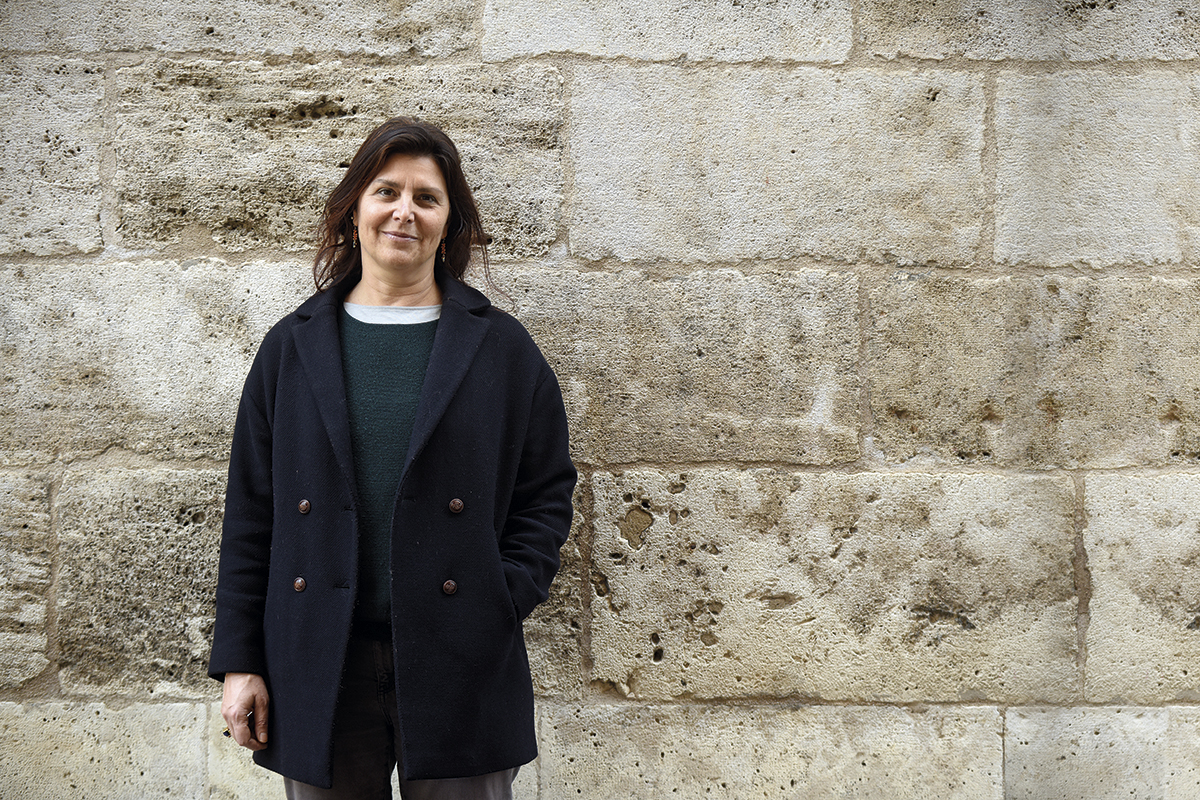
Returning readers will be familiar with the concept of archaea, even though biology classes might already be quite far away. These unicellular microorganisms have been the key point of one of the most recent and impactful scientific milestones: the development of CRISPR genome editing techniques. In the early 1990s, microbiologist Francis Mojica detected an immune defence mechanism in the Archean inhabitants of the Santa Pola salt flats that allowed them to precisely modify their own genome to protect themselves from viruses. Some thirty years later, the applications of CRISPR in various fields of interest (from gene therapy to the creation of more weather-resistant crops) are still surprising. Despite the leap to stardom, archaea remain largely unknown, and not only outside of the scientific sphere. Their diversity still hides many secrets, as Simonetta Gribaldo (Rome, 1969) points out. She is perhaps one of the people in the world who knows them best.
Simonetta Gribaldo’s enthusiasm for these microscopic organisms is evident. Not surprisingly, she has devoted almost her entire scientific career to them, which was not easy. Within the world of microbiology, the study of archaea has been low priority until recently, and Dr. Gribaldo had to fight hard for others to realise the potential of the field: «I needed to make my own niche», she explains. In addition to her PhD in Phylogenetics from the University of La Sapienza in Rome, she has completed three postdoctoral stays in Paris: at the Pierre and Marie Curie University, at the University of Orsay, and at the Pasteur Institute. Since 2005, she has been linked to the latter institution, which is dedicated to public health research, and is currently head of the Evolutionary Biology of the Microbial Cell Unit.
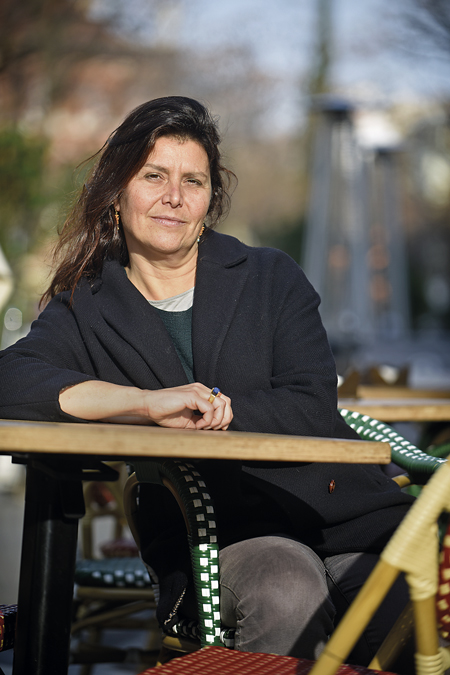
Photo: Daniel García-Sala
On February 2020, Simonetta Gribaldo visited the University of Valencia to present a conference to celebrate Darwin’s Day, invited by the Centro Octubre de Cultura Contemporánea and the Institute of Catalan Studies (IEC). A few days before, a Japanese group had taken an important step in the study of the so-called Asgard archaea. In 2015, a team from the University of Uppsala obtained the first genome sequence of this type of archaea, from a sample obtained near Loki Castle, an underwater hydrothermal site between Norway and Greenland. They were, of course, renamed «Lokiarchaeota». In the following years, Thor, Odin, and Heimdall archaea were added to the list. They had similar characteristics and were also named after Nordic gods, even though they were far from the coasts blessed by the Asgardian deities. Until now, the sequencing of these archaea came exclusively from analysing samples from their environment. But in January 2020, Hiroyuki Imachi’s group from the Japan Agency for Marine-Earth Science and Technology published in Nature the results of what had previously been impossible: growing archaea in the laboratory. Taking advantage of her time in Valencia, we talked to her about these matters.
How did you become interested in archaea?
That is a funny story. I did my studies in a very small university in Sicily, I graduated in 92, and then I went to England to do a master. There I was doing something that very boring: I was typing strains from hospital infections, that is, identifying bacteria coming from infections in the lab: this is streptococcus, this is staphylococcus… Interesting, but not very exciting. And one day we went all to a conference in microbiology in London and there was a session in the evening on the tree of life. And I remember the room was packed and a lot of people were sitting on the floor, and someone pulled out a tree of life and it was like a revelation. It was 95 and I had never heard of the archaea in my life. No one ever told me about the existence of the archaea, I never studied them, and so I said: «What the heck are these guys? And how do you build a tree of life?». And that was it, I stopped what I was doing, and I decided to start everything again. I went to Rome and I started a PhD in the tree of life and ancient phylogeny. This is how I came to know the archaea.
«Archaea are seen like a kind of curiosity, but not very relevant in general for microbiology, which is completely false»
Why do you think archaea are so unknown?
First, they have been discovered much later than bacteria. I mean, they were known, but not known as archaea until 1977. Second, they are commonly known as extremophiles, that is, microorganisms that live in very harsh environments. So, [they are seen] like a kind of curiosity, but not very relevant in general for microbiology, which is completely false. And then, there are not known pathogens for humans [among the archaea] and so of course there is much less interest on them. But now these things are changing; for instance, people are finding out that the archaea also live in our intestine. This is completely new subject, a virgin territory on how archaea are involved in disease, but also in health; for example, in maintaining a good microbiota.
Do you find that often people confuse archaea with bacteria?
Yes, in particular when they call them «archaebacteria» [laughs]. We do not like to call them «archaebacteria» anymore. At the beginning, they were called like this, but it does not make any sense anymore, because they are very different from bacteria. In terms of molecular mechanisms, they are much closer to us than bacteria. Evolutionary speaking, they are something very different.
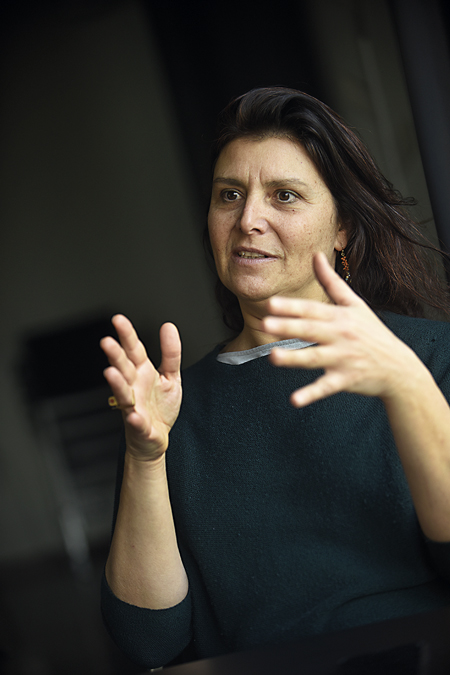
Photo: Daniel García-Sala
Let’s talk about the famous Asgard archaea. Why their sequencing has been so important, not only to study archaea in general, but to study the origin of the eukaryotic cell?
Until some time ago, we only knew the Asgard archaea from small sequences [we picked] from the environment. But with new techniques we have managed to sequence their whole genomes, so we can place them more correctly in the tree of life. They show that they are really the closest relatives of eukaryotes, and this placement is also supported by the fact that they seem to have gens that were thought to be specific of eukaryotes. But now you find them in this kind of archaea, the Asgard archaea, so it means that these genes that made up the eukaryotic cell actually are more ancient that we thought. So we have this kind of new window into the emergence of the first eukaryotic cell, which is one of the most important questions in evolutionary biology: how to close this gap between archaea and eukaryotes by finding all this kind of intermediary forms.
There is this theory that the eukaryotic cell stems from archaea that «swallowed» a bacterium…
Yes, but there are a lot of things that we do not know yet. And I really do not like to call these archaea «the ancestors» or «the missing links»: these are modern archaea. You have to imagine something branching from a common ancestor, so they are very different from this ancestor that they share with eukaryotes. But, still, they can tell us a lot of things about how to reconstruct these ancestors.
Apparently, one of the difficulties for the study of the archaea is that growing them in the lab is not that easy, is that right?
It is not difficult for all of them, there are archaea that we grow in the lab, although a bit slower… But the majority of bacteria are the same. If you think of the ones that are studied in the lab, they are just a bunch. The majority of bacteria are not grown in the lab. And they are very slow, and the same thing is for archaea.
As you know, Hiroyuki Imachi’s team managed to grow a culture of Argard archaea collected from the Nankai trough, located south of Honshu island, which they have baptized as Prometheoarchaeum. One of the curious things about this study is that, apparently, the cultures have benefited from an unusual ingredient: baby milk powder.
Yes, they eat amino acids [laughing]. Twelve years of enrichment. That is really crazy. And still, these Prometheus archaea, which are the first cultured archaea member of the Asgard, still take twenty days for one division. Escherichia coli takes half an hour, so that really gives you [an idea of] the difficulty. These archaea live in environments which are anoxic, like sediments very deep in the sea, and they are living their life with very low energy, so they are really slow. That is why so is difficult to get them.
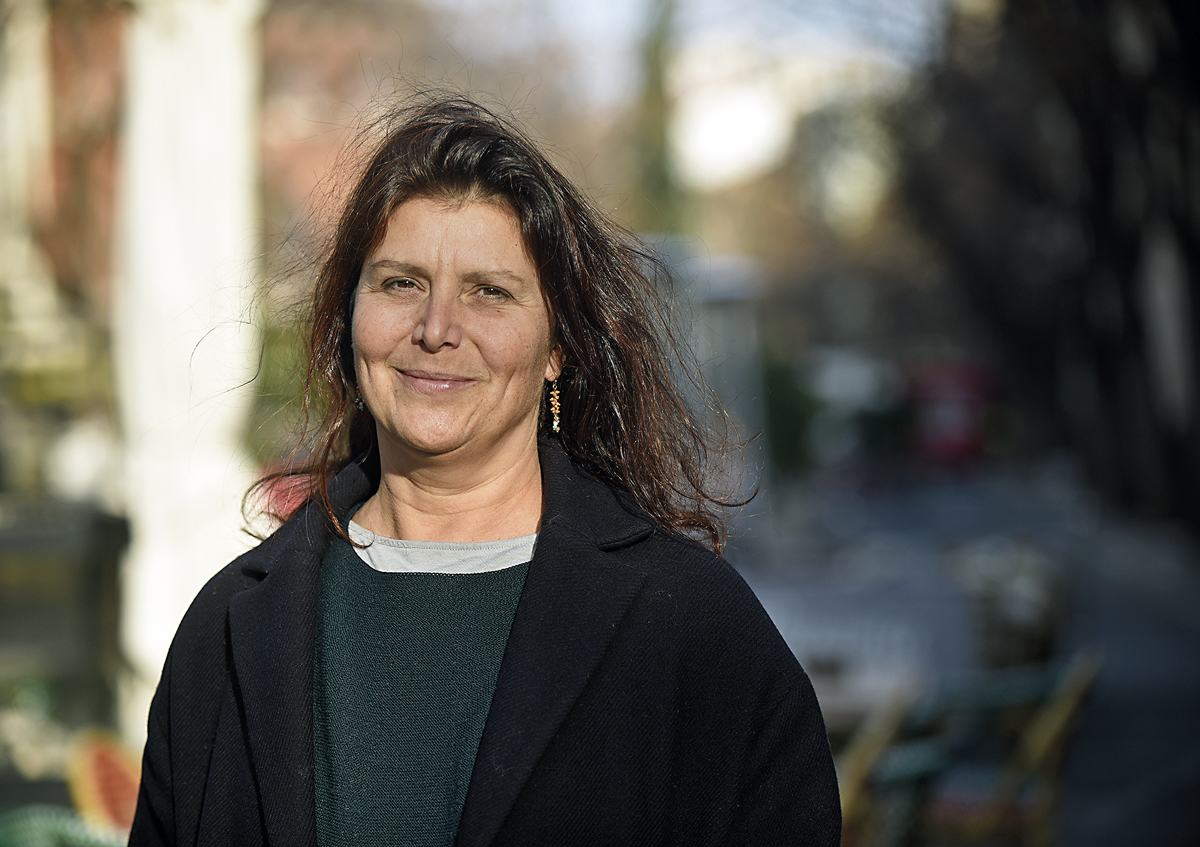
Photo: Daniel García-Sala
«Going back in time can give you some ideas on how evolution will go further in the future»
Why do you think is important to redo this evolutionary path until LUCA [Last Universal Common Ancestor]?
It is a fundamental question! People have also been working on the migrations of human populations to understand the origin of humans, so it is exactly the same as that. People that work in evolution want to go back in time. Also, going back in time can give you some ideas on how evolution will go further in the future and so, predict and also avoid stupid things, like losing biodiversity and things like this. It gives you a snapshot of how things evolve, how they have evolved in the past, and how they might evolve in the future.
And what are the main difficulties that you find during this reconstruction process?
We are talking about events that happened as far as 3.5 billion years ago, so it is like an archaeologist finding three stones and trying to make up what the pyramid was like. We have bits and pieces of information, and we are trying to make sense of them. And there are a lot of other circumstances, like that the pyramids were destroyed and used to build a cathedral or whatever; this happens also with the sequences that we are working on. Because for these very ancient events, you do not have fossils anymore. In particular, for microorganisms that do not leave fossils, the only thing you are left with is the DNA sequences. And so, if you want to go back in time, you need to reconstruct with mathematical models the patterns of these mutations overtime, so these things change a lot according to our progress in these mathematical models, which become the more and more powerful and realistic. On another side, we keep finding and accumulating more information. More stones. The more information you have, the more you manage to make sense of what was going on in the past.
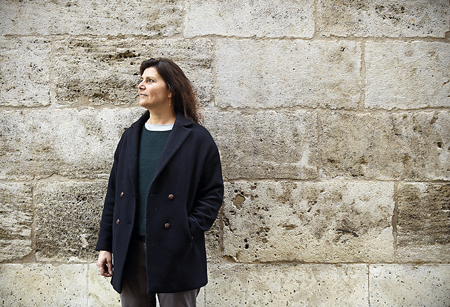
In fact, apparently, in five years time you have gone from having one hundred genome sequences from archaea to three thousand.
Yes, I think we are in 3,500, and no, and it is not stopping.
How did you get there? What tools have come up that are helping you?
It is called metagenomics, which is community genomics. Basically, you go in any environment, you sequence all the DNA that is there, which belongs to very different microorganisms. And then it is like you have ten puzzles, and they are all mixed up. And you want to put all the pieces of one puzzle on one side, the ones from another on the other side… But it appears that each species has their own pattern in sequences, which is really, really handy, so this can tell you all these bits of sequences that belong to one organism, and another, and another… So, with this method, you can reconstruct genomes from organisms without culturing them. This is called genomes coming from metagenomes or MAG, metagenome assembled genomes. This is the big thing that happened. In the archaea, I think that the vast majority of genomes that we have come from these. They are still uncultured, so we only know them from sequences from where they were found. And from that, from the content of the genes, we can infer how they function, their metabolisms... But there is no proof yet. On another side, what is important is that this information can also help to culture them, because you know what they like, what they eat… and so I think it works the two ways: sequences from culturing and culturing from sequences. This is what these people did with the Prometheus archaea.
Before you said that archaea are seen like a sort of curiosity because most of them are extremophiles. But you have found very interesting exceptions, have you not?
Yes, archaea are not only extremophiles. But another thing is that they are very important in metabolisms [operations] like nitrification, which we did not know. We thought it was only bacteria doing it. We are also getting unprecedented information on the most ancient metabolisms in the archaea, for example, methanogenesis. And another thing we have found recently is a new form of life that it is nanosized, very miniaturised archaea, which is very interesting, and it opens more questions: how they became like this, and what they do. These nanosized archaea associate one on another, but we have also found them close to bacteria.
And what about those archaea that live in our intestines?
Well, the archaea have been known for a long time in veterinary science, they are known to be very abundant in ruminants. But very recently we have discovered new lineages of archaea in the human microbiome. For the moment, we can make just associations: we find shifts in the abundance of these methanogens according to different diseases, that can range from obesity to other kinds of cardiovascular diseases. So right now, we do not know if there is a real correlation. But some of these archaea might also be involved in disease in way that is called dysbiosis [microbial imbalance]; they might contribute to some infections cause by bacteria, for example by increasing the growth of some bacteria that might be harmful. On another side, they might be also beneficial, because for example some of these archaea eat up trimethylamine, which is a compound that it is bad for your heart if you have too much of it. This is also something that has developed the concept of archaebiotics, in a way. But it is true that we are still at the beginning of all that. We do not know how they adapted to the human body, how long have they been there, whether everybody has them or not, and what is their involvement in health. It is something that it is starting.
What are the challenges in the nearby future for your field?
The challenge that we face every day is that we have too many sequences now to reconstruct our trees. Since we work at the level of the tree of life and not a small branch, we need to incorporate all this diversity to see really what is happening and the relationship of the three domains of life. We have too many sequences now, and it is becoming really difficult to treat them, and to make trees that make sense because the computers do not arrive to calculate all these things. The challenge now is to try to reduce this big diversity for our analysis but still maintaining a good representativity of all of it, and develop new methods that can take into account this growing amount of data in a reasonable amount of time and keeping them reliable.
And what do you think we will learn from the study of archaea in the long term?
There is the question of the origin of eukaryotes, of course. Eukaryotes and bacteria seem to be very homogeneous, for instance in their molecular machineries. But the archaea have the whole rainbow of possibilities. It looks like they are much more diverse in many ways: the way they divide, their cell envelopes... I think we will learn why they are so diverse, and why they are so different from bacteria, because if you think about that, they live more or less the same life: they are small, unicellular… They live with bacteria in many environments, but for some reason they are very different. But I also want to learn how they originated and why there was this major split between bacteria and archaea in the past, what was the driver of this divergence.
«Many discoveries will come from environments that have not been sampled a lot, like really deep sediments, even in hyperthermophilic environments»
I was thinking how the tree of life is constantly growing new branches. Do you think the metaphor will fall short?
This is very difficult to predict. For the moment, we are still discovering a lot of things, a lot of diversity. It depends on whether we have sampled everywhere in the world or not. I think many discoveries will come from environments that have not been sampled a lot, for example, really deep sediments, even in hyperthermophilic environments. And then, there are all the viruses, but that is another story. I think we will discover still new things. I do not know whether we will discover a fourth domain of life, but for the moment whatever we find it is either bacteria, archaea or eukaryotes. It looks like these are the primary divisions.
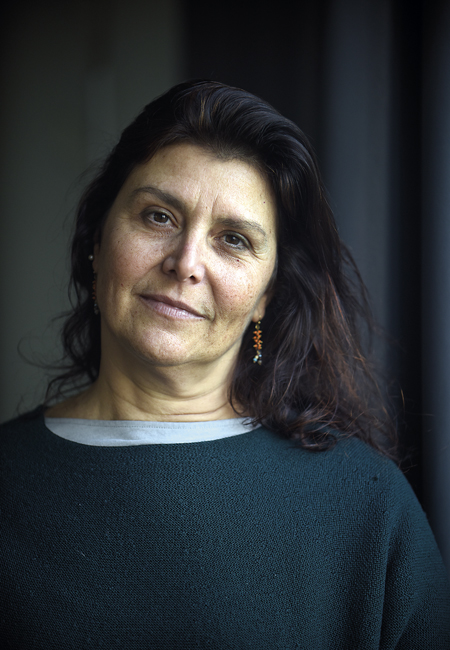
Not too long ago was the day of girl and women in science and I wanted to know your perspective on your own field of study, if you find it particularly male-dominated…
It is. I mean, it is and it is not! Think of Lynn Margulis, there have been great women in evolution in the past. But they are still a minority, even though this is changing so rapidly… For my whole career there were not a lot of women in the field, and there were a lot of man fighting against each other with a lot of testosterone because they all had their pet theory… It was really scary for me as a young student to see these heated debates. And now, little by little, there is a new generation of women, coming out, very young researchers, and they are working with ancient evolution or environmental microbiology, and they are moving in. This is really nice, I think. I am not saying women are scared to get into the fight, it is just sometimes [they bring] a different way of discussing things.
«There is a new generation of women working with ancient evolution or environmental microbiology»
Your career at the Pasteur institute has been brilliant. You got there in 2003 for a postdoctoral scholarship and now you are head of a research unit. How was this journey?
How difficult it was? It was very difficult [laughing]. I needed to convince the Institute Pasteur that it was worth working on the archaea even though they are not pathogens, because we were missing a whole branch of microbial diversity that is even in our own intestine. So, little by little, I managed to convince my colleagues that the archaea are really important, and they are starting to think in evolutionary terms. Because many people that work with bacteria, in particular health related issues, are not very into evolution, but now I think they are starting to understand how giving an evolutionary aspect to your research can give you a lot of information even on the evolution of pathogens or specific mechanisms that could be targets also for medical purposes. So, we are collaborating a lot nowadays: they are bringing in their own bacterial expertise, and we are applying it to the archaea. And they are jumping on their seat every time that we discuss because archaea are so different… I think this is idea that the archaea are just curious bacteria is being dismantled every day. They are something else entirely.
«Giving an evolutionary aspect to your research can give you a lot of information»
In a few hours, you will be talking to a room presumably full of students. Do you enjoy talking to the upcoming generations?
Yes, of course. I think it is important that they keep an eye on the big picture, because it gives you another idea of what you are doing in biology. I will also tell them that, if they want to go into microbiology, it is a really blooming area. The next few years are going to be the golden age of microbiology, not only in the study the archaea, but also of unicellular eukaryotes, and a lot of unknown bacteria, so… I will encourage them to go there and work in a new model organism in particular, because if everybody is working on E. coli, we will never know about other things [laughs]. While E. coli is very good, we have no idea whatsoever of the vast majority of microbial life, and we do not have any genetic tools to study it. Our knowledge of general microbial diversity is still very partial.

